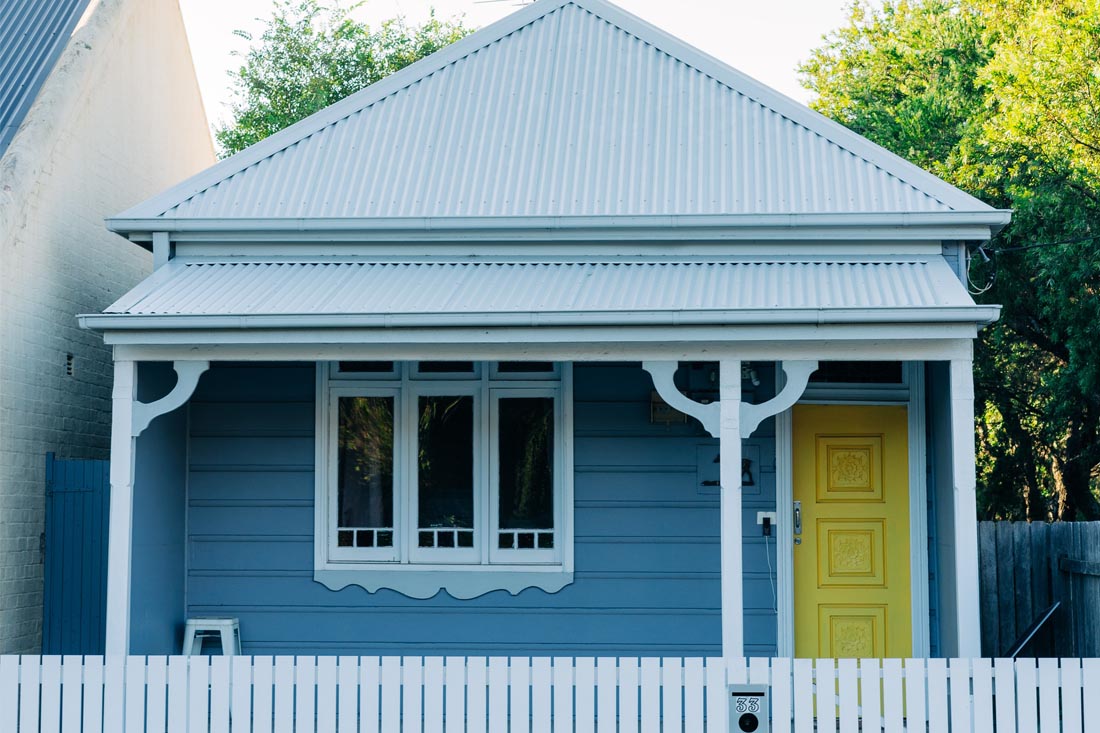
How to Speed Up Your Home Loan Approval
Getting home loan approval can sometimes take longer than expected, but there are ways to make the process smoother and faster. Lenders evaluate several factors, including your credit score, income stability, and loan application details, to determine your eligibility. By preparing in advance and following the right steps, you can avoid unnecessary delays and get approved sooner.
Whether you’re a first-time buyer or refinancing, this guide will help you speed up your mortgage approval with practical tips.
Understanding the Home Loan Approval Process
The home loan approval process involves multiple steps, and understanding how lenders evaluate your mortgage application can help you prepare in advance. Banks and mortgage lenders assess various factors, including your credit score, income, debt-to-income ratio, and down payment amount.
Typically, the approval process includes:
- Loan Pre-Approval: Lenders review your financial background and provide a conditional approval.
- Formal Application Submission: You submit all necessary documents, including proof of income, ID verification, and bank statements.
- Credit and Financial Assessment: The lender evaluates your credit history, outstanding debts, and repayment ability.
- Property Valuation: If required, the lender assesses the property’s value to determine loan eligibility.
- Final Approval and Loan Settlement: If all conditions are met, the lender formally approves the loan, and funds are disbursed.
Knowing these steps can help you avoid unnecessary delays and speed up the approval process.
Steps to Get Your Home Loan Approved Faster
If you want to speed up your home loan approval, taking proactive steps can make a big difference. Lenders look for applicants who are financially prepared and meet all requirements without delays. Below are key actions that can help you get approved faster.
Get Pre-Approval for Faster Processing
A loan pre-approval gives you an estimate of how much you can borrow and shows sellers you’re a serious buyer. It also speeds up the formal approval stage since lenders have already reviewed your financial details.
- Contact a mortgage broker or lender early to start the pre-approval process.
- Ensure your credit score and financial records are in good shape before applying.
Minimise Debt and Reduce Expenses
Lenders check your debt-to-income ratio to assess if you can handle additional loan payments. Lowering your debts improves your chances of formal approval.
- Pay off outstanding loans and credit card balances where possible.
- Avoid taking on new debts before submitting your loan application.
Improve Your Credit Score Before Applying
Your credit score is one of the most important factors in a mortgage loan approval. A higher score can lead to quicker approval and better interest rates.
- Pay all bills on time and clear overdue debts.
- Check your credit report for errors and dispute any inaccuracies.
Establish a Strong Savings and Repayment History
Lenders prefer borrowers with a proven track record of managing finances well. Having consistent savings and regular debt repayments builds trust with mortgage lenders.
- Maintain a solid history of rent or mortgage payments.
- Keep savings aside for your down payment and other loan-related costs.
Avoid Making Too Many Loan Applications
Applying for multiple mortgage loans at once can negatively impact your credit score and signal financial instability to lenders.
- Research and choose the best home loan option before applying.
- Avoid applying with multiple lenders within a short time.
Organise and Submit All Required Documents
Missing documents are a common reason for delays in the loan approval process. Ensure you provide all necessary paperwork upfront.
- Gather payslips, tax returns, bank statements, and proof of employment.
- Have your loan calculators ready to estimate your borrowing capacity.
Declare All Liabilities to Avoid Delays
Failing to disclose existing debts can slow down your mortgage application or even result in rejection. Transparency is key to a smooth approval process.
- Declare credit cards, car loans, personal loans, and any other financial obligations.
- Provide accurate information to prevent unnecessary back-and-forth with lenders.
Choose the Right Mortgage Broker or Lender
Working with an experienced mortgage broker can help streamline your home loan process. Brokers guide you through lender requirements and match you with the best options.
- Compare different lenders and loan terms.
- Seek professional guidance from mortgage brokers to improve approval chances.
Use Loan Calculators to Understand Your Eligibility
Online loan calculators can help you estimate loan repayments, compare interest rates, and assess affordability before applying.
- Use home loan calculators to set realistic expectations.
- Check if you meet lender criteria before submitting your application.
Ensure a Stable Employment History
Lenders prefer applicants with consistent employment and income stability. A strong job record increases your home loan approval chances.
- Avoid changing jobs during the loan approval process.
- Show steady income through payslips and tax returns.
Be Open and Honest About Your Financial Situation
Honesty and transparency with lenders help prevent unnecessary delays and improve your credibility.
- Provide clear and accurate information in your loan application.
- Respond to lender requests promptly to keep the approval process on track.
Additional Tips for Faster Approval
Beyond the essential steps, a few extra strategies can help accelerate your home loan approval process. These small but effective actions can make a big difference when dealing with mortgage lenders.
Save for a Higher Down Payment
A larger down payment reduces the lender’s risk and can speed up approval. Some lenders may even waive certain requirements for borrowers with a high deposit.
- Aim for at least 20% of the property price to avoid Lenders Mortgage Insurance (LMI).
- Increase your savings to show financial stability.
Reduce Your Debt-to-Income Ratio
Lenders compare your income to existing debts before approving a mortgage loan. A lower debt-to-income ratio improves approval chances.
- Pay off credit cards and personal loans before applying.
- Avoid making large purchases on credit.
Anticipate Requests for Additional Information
Sometimes lenders request extra documents or clarifications before granting formal approval. Being proactive can save time.
- Keep your financial records up to date.
- Respond quickly to lender requests to prevent delays.
Have Your Budget Ready for Quick Assessment
A well-documented budget reassures lenders of your ability to manage loan repayments.
- Use loan calculators to estimate monthly expenses.
- Plan for additional costs like stamp duty, legal fees, and property inspections.
Consulting a Mortgage Professional for a Smoother Process
Navigating the home loan approval process can be overwhelming, especially with varying lender requirements and financial assessments. A mortgage broker can help simplify the journey by guiding you through your options and ensuring you meet all lender criteria.
How a Mortgage Broker Can Help
Working with a mortgage broker gives you access to a wider range of lenders and home loan products, helping you secure the best deal.
- Compare different lenders and interest rates to find the most suitable option.
- Get assistance in preparing and submitting your mortgage application correctly to avoid delays.
- Receive expert advice on improving your credit score and financial profile.
When to Seek Expert Guidance
If you face challenges like a low credit score, inconsistent income, or complex financial history, consulting a mortgage broker can increase your chances of approval.
- If you’ve been rejected by a lender, a broker can help find alternative solutions.
- If you’re unsure about loan terms, a broker can break down the details for you.
- If you want to refinance mortgages, they can help secure better terms.
Get Personalised Home Loan Assistance Today!
Finding the right home loan can be tricky, but you don’t have to do it alone. Front Row Financial connects you with experienced mortgage brokers who can fast-track your loan approval.
Talk to an expert today and take the next step toward your dream home!
Get Your Home Loan Approved Without the Stress
Waiting for home loan approval can feel overwhelming, but it doesn’t have to be. A little preparation—like improving your credit score, reducing debt, and choosing the right mortgage lender—can make the process much smoother.
Taking simple steps, such as getting pre-approved, organising your paperwork, and working with an experienced mortgage broker, can help you move forward faster and with confidence.
Let’s Make Your Home Loan Approval Easy!
No more waiting and wondering—Front Row Financial can help you fast-track your approval.
Talk to a mortgage expert today and take the next step toward your new home!
FAQs:
Q1: How long does home loan approval usually take?
The home loan approval process can take anywhere from a few days to several weeks. Factors like your credit score, loan application completeness, and lender requirements influence the timeline. Working with a mortgage broker and organising documents in advance can help speed things up.
Q2: What can cause delays in my home loan approval?
Common reasons for delays include:
- Missing or incomplete documents
- A low credit score or outstanding debts
- Unstable employment history
- Applying for multiple mortgage loans at the same time
- Property valuation issues
Q3: How can I improve my chances of quick loan approval?
To get home loan approval faster:
- Pay off debts and improve your credit score
- Save for a higher down payment
- Organise all necessary paperwork before applying
- Work with a trusted mortgage lender or broker
Q4: Does pre-approval guarantee loan approval?
No, loan pre-approval is not a final approval, but it does increase your chances of success. It shows lenders that you’re financially capable, but they still need to assess factors like the property valuation and your final financial position.


















